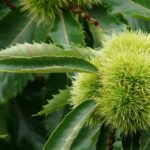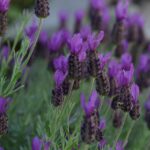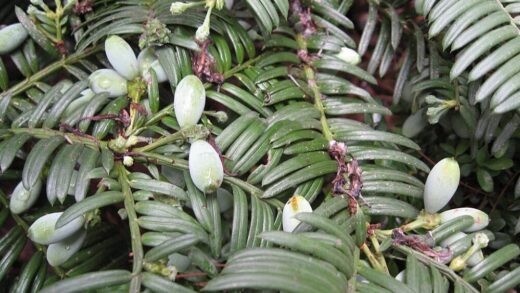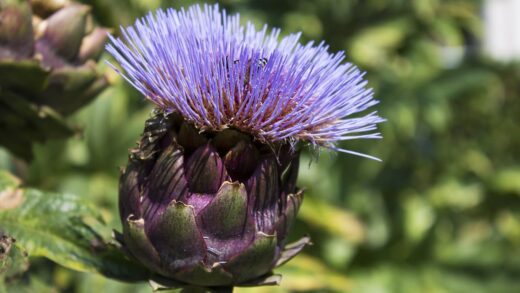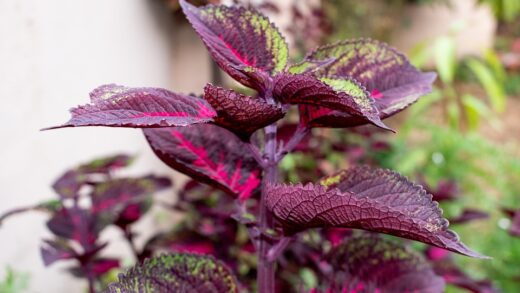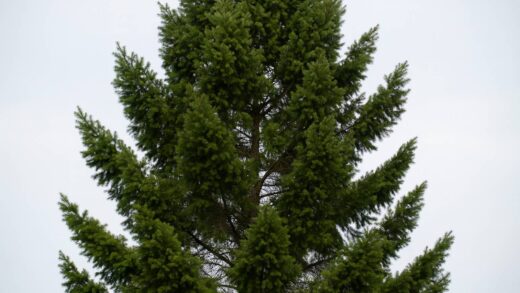Understanding and meeting the specific water requirements of the Asiatic dayflower is fundamental to its successful cultivation, as moisture is one of the most critical factors influencing its health, growth, and flowering. This plant is native to moist, humid environments, and this preference is deeply ingrained in its physiological needs. Therefore, the primary goal of any irrigation strategy should be to maintain a consistently moist soil environment without allowing it to become waterlogged. Inadequate water will quickly lead to wilting, stunted growth, and a reduction in flower production, while excessive water can result in root rot and other fungal diseases. Achieving this balance requires careful observation of the plant and the prevailing environmental conditions.
The key to proper watering is consistency. The Asiatic dayflower does not respond well to a cycle of extreme drought followed by flooding. Instead, it thrives when the soil is kept evenly moist, similar to a wrung-out sponge. The frequency of watering will depend on several factors, including the type of soil, the ambient temperature, the amount of rainfall, and whether the plant is grown in the ground or in a container. Gardeners must develop a tactile sense of their soil’s moisture content, regularly checking it by inserting a finger a few centimeters deep to assess the need for irrigation.
During the initial establishment phase, right after planting or transplanting, the need for consistent moisture is at its peak. Young plants have not yet developed an extensive root system and are more vulnerable to drying out. Watering them every other day, or even daily in very hot and dry weather, may be necessary to prevent transplant shock and encourage rapid root development. This initial period of attentive watering lays the foundation for a robust and resilient plant later in the season.
It is also important to consider the method of water application. Watering at the base of the plant, directly onto the soil, is far more effective than overhead watering. This approach ensures that the water penetrates deeply to the root zone where it is needed most and helps to keep the foliage dry. Wet foliage, especially overnight, can create an ideal environment for the development of fungal diseases such as powdery mildew, so directing water to the soil surface is a simple yet effective preventative measure.
Factors influencing water needs
Several dynamic factors influence the water needs of the Asiatic dayflower, and an adaptive approach to irrigation is necessary for optimal plant health. The most significant factor is the prevailing weather. During periods of high heat, low humidity, and windy conditions, the rate of evapotranspiration—the process of water moving through the plant and evaporating from its leaves—increases dramatically. In such conditions, the plant will require more frequent watering to replenish its lost moisture and prevent wilting. Conversely, during cool, cloudy, or rainy periods, the need for supplemental irrigation will be significantly reduced.
More articles on this topic
The type of soil in which the plant is growing also plays a crucial role in determining watering frequency. Sandy soils have large particles and drain very quickly, meaning they will need to be watered more often to maintain adequate moisture levels. On the other hand, heavy clay soils have very fine particles, retain water for much longer, and can be prone to waterlogging. The ideal soil is a well-draining loam enriched with organic matter, which provides a good balance of moisture retention and aeration, offering the most forgiveness in an irrigation schedule.
The plant’s location in the garden and its stage of growth are additional considerations. A plant situated in full sun will lose moisture more rapidly and require more water than one growing in partial shade. Similarly, the water demand of the Asiatic dayflower is highest during its period of active growth and flowering in the summer. As the plant matures and its growth rate slows in the autumn, its water requirements will naturally decrease, and the irrigation frequency should be adjusted accordingly to prevent oversaturation of the cooler soil.
Container-grown plants have distinct watering needs compared to those grown in the ground. The limited volume of soil in a pot or hanging basket can dry out much more quickly, especially on hot or windy days. These plants often require daily watering during the summer months to keep the soil consistently moist. It is essential to use containers with adequate drainage holes to allow excess water to escape, as the combination of frequent watering and poor drainage is a common cause of root rot in potted plants.
Best practices for irrigation
Adhering to best practices for irrigation will ensure that the Asiatic dayflower receives the right amount of water at the right time, promoting healthy and vigorous growth. One of the most important principles is to water deeply and less frequently, rather than shallowly and often. Deep watering encourages the plant to develop a more extensive and resilient root system that can access moisture from a larger volume of soil. This makes the plant more drought-tolerant and less dependent on constant surface watering. When irrigating, apply water slowly until the top fifteen to twenty centimeters of soil are thoroughly moistened.
More articles on this topic
The time of day when watering occurs can also have a significant impact on the plant’s health. The best time to water is in the early morning. This allows the plant to absorb the moisture and prepare for the heat of the day, and any water that splashes onto the foliage has ample time to evaporate in the morning sun. Watering in the middle of a hot day can be inefficient due to high rates of evaporation, while watering in the evening can leave the foliage wet overnight, which increases the risk of fungal diseases.
Using mulch is a highly effective practice for managing soil moisture. Applying a five- to seven-centimeter layer of organic mulch, such as shredded bark, straw, or compost, around the base of the plants offers numerous benefits. Mulch acts as a barrier, reducing the amount of water that evaporates from the soil surface. It also helps to moderate soil temperature, keeping the roots cooler in the summer, and it suppresses weed growth, which reduces competition for available water.
Regularly monitoring the plant for signs of water stress is a crucial component of an effective irrigation strategy. The most obvious sign of underwatering is wilting leaves. If the leaves appear droopy or limp, especially during the heat of the day, it is a clear indication that the plant needs water. Conversely, signs of overwatering can be more subtle but may include yellowing leaves (chlorosis), stunted growth, or a general lack of vigor. By paying close attention to these visual cues, gardeners can fine-tune their watering practices to meet the plant’s specific needs.
Signs of over and under watering
Recognizing the signs of both overwatering and underwatering is a critical skill for any gardener cultivating the Asiatic dayflower. While their initial symptoms can sometimes appear similar, such as wilting, closer inspection reveals key differences. Underwatering is the more straightforward issue to identify. The most immediate symptom is flaccid or drooping leaves and stems, as the plant loses turgor pressure due to a lack of water. The soil around the plant will be visibly dry and may even pull away from the sides of a pot. If the drought condition persists, the leaf edges may turn brown and crispy, and the overall growth of the plant will be severely stunted.
Overwatering, while also detrimental, often presents more complex and sometimes misleading symptoms. A classic sign of excessive moisture is the yellowing of lower leaves, a condition known as chlorosis, as the waterlogged soil prevents the roots from absorbing essential nutrients. The plant may also appear wilted, which can be confusing, but this wilting is due to the roots suffocating and rotting from a lack of oxygen, rendering them unable to take up water. The soil will feel soggy or muddy to the touch, and there might be a sour or musty smell indicating anaerobic decay.
Distinguishing between the two conditions requires a physical check of the soil. If the plant is wilting but the soil is dry, the cause is clearly underwatering. However, if the plant is wilting and the soil is wet, overwatering is the culprit. In container-grown plants, this can be confirmed by tipping the pot and checking the drainage holes for blockages or by carefully sliding the plant out to inspect the roots. Healthy roots should be firm and white, while rotted roots will be brown, mushy, and may have a foul odor.
Correcting these issues involves adjusting the irrigation practices accordingly. For an underwatered plant, a thorough, deep watering is usually sufficient to bring about a quick recovery. For an overwatered plant, the solution is to cease watering immediately and allow the soil to dry out. Improving drainage is also essential; this may involve amending the garden soil with organic matter or repotting a container plant into a better-draining mix and ensuring the pot has adequate drainage holes. Moving forward, a more carefully monitored watering schedule should be adopted to prevent a recurrence of the problem.
Adapting to container gardening
Watering an Asiatic dayflower grown in a container requires a different approach compared to one planted in the garden, primarily due to the limited soil volume and faster drying rates. Pots, hanging baskets, and other containers have a smaller reservoir of soil, which heats up and loses moisture to evaporation much more quickly than garden soil. Consequently, container-grown plants need more frequent irrigation, often on a daily basis during the peak of summer. It is essential to check the soil moisture every day, especially during hot or windy weather, to prevent the potting mix from drying out completely.
The choice of container material also affects watering frequency. Porous materials like unglazed terracotta or clay allow moisture to evaporate through their sides, causing the soil to dry out faster than it would in plastic, glazed ceramic, or metal containers. While terracotta pots offer excellent aeration for the roots, they demand a more vigilant watering schedule. Regardless of the material, it is absolutely critical that every container has at least one drainage hole at the bottom to allow excess water to escape freely and prevent the soil from becoming waterlogged.
When watering container plants, the goal is to moisten the entire root ball thoroughly. This is best achieved by applying water slowly and evenly to the soil surface until it begins to run out of the drainage holes at the bottom. This method ensures that all the soil in the pot is hydrated and also helps to flush out any accumulated salts from fertilizers. After watering, it is important to allow the pot to drain completely and not to let it sit in a saucer full of water for an extended period, as this can lead to root rot.
To help mitigate the rapid drying of container soil, there are several strategies that can be employed. Using a high-quality potting mix that contains moisture-retentive components like peat moss or coco coir can extend the time between waterings. Applying a layer of mulch, such as fine bark chips or decorative stones, on top of the soil can also help to reduce surface evaporation. Finally, grouping containers together can create a more humid microclimate around the plants, which can help to slow the rate of moisture loss from both the soil and the foliage.








